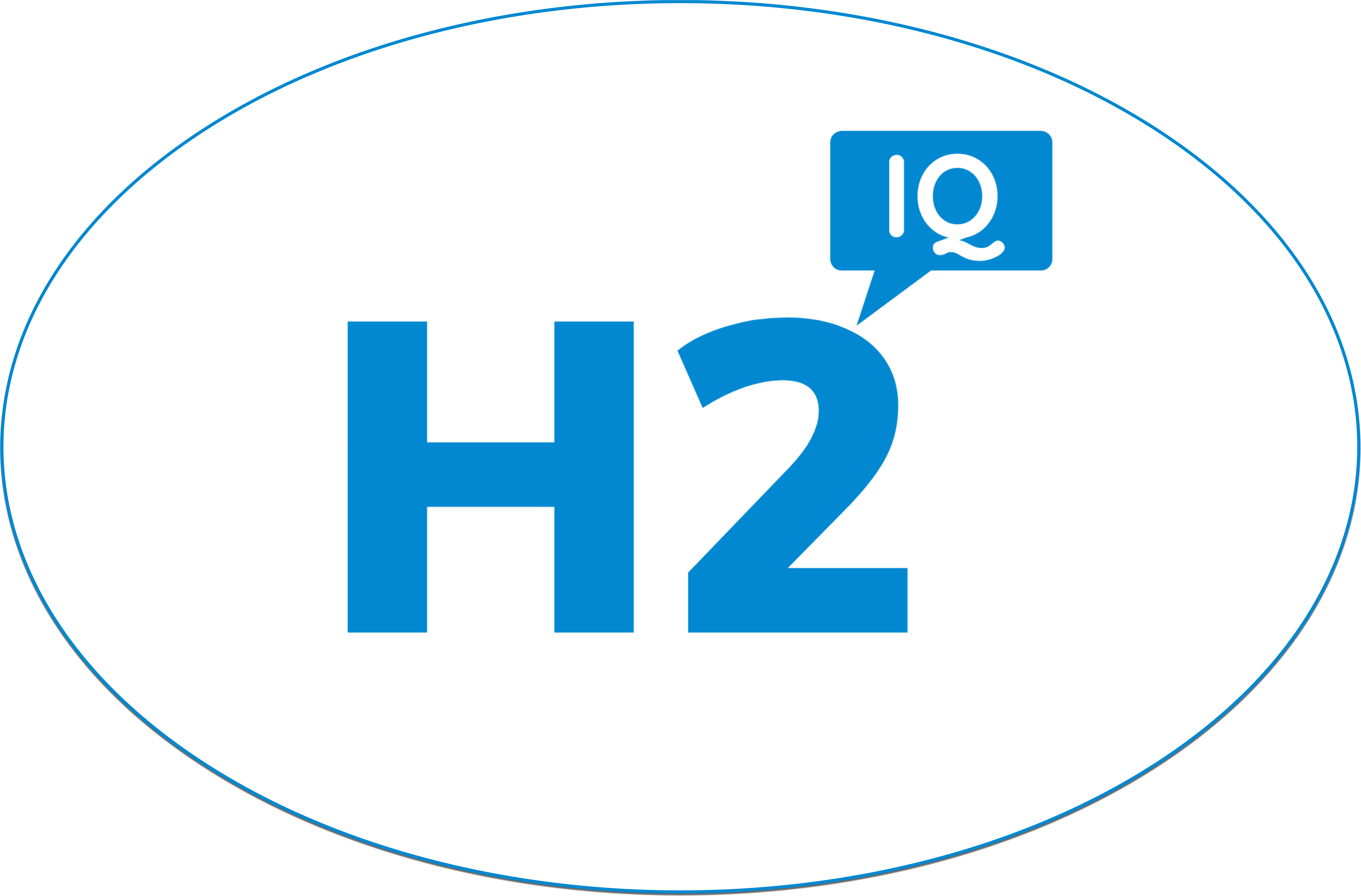Hydrogen fuel technologies produce the same end-product but get there in different ways. A color code system is commonly used to differentiate between these processes. This article discusses green hydrogen and how it is produced and used.
Green hydrogen defined
Green hydrogen is produced using renewable energy to power electrolysis. Electrolysis uses electricity to split water into hydrogen and oxygen molecules. Green hydrogen technologies are considered carbon neutral since no carbon dioxide (CO2) is produced or emitted during the process.
How is green hydrogen produced?
Electrolysis is a water-splitting process that operates on electricity. For hydrogen produced through electrolysis to be green, the electricity must come from renewable resources, such as solar, wind, or hydropower.
The process takes place in an electrolyzer. An electrolyzer has an anode (where electricity moves into), a cathode (where electricity flows out of), and an electrolyte (a substance that separates into ions when dissolved in water). Electric current passes through the water, separating hydrogen and water molecules.
Currently, there are three main types of electrolysis technologies. These processes differ mainly based on the material used as the electrolyte.
- Polymer electrolyte or proton exchange membrane (PEM) electrolysis – Uses a solid plastic-like material as the electrolyte (e.g., platinum group metals such as iridium).
- Solid oxide fuel cells (SOFC) and Solid Oxide Electrolyte Cells (SOEC) electrolysis – Uses a ceramic material as the electrolyte.
- Alkaline electrolysis– Uses a liquid alkaline solution (e.g., sodium hydroxide) as the electrolyte.
An electrolysis technology called anion exchange membrane (AEM) water electrolysis is also in the early stages of development. This process uses lower-cost catalyst materials than other methods.
PEM electrolysis
During PEM, water reacts with the anode and splits into oxygen, protons (hydrogen ions), and electrons. The electrons move through the circuit, and the protons move through the membrane toward the cathode. Finally, the protons and electrons combine at the cathode to produce hydrogen.
SOFC and SOEC
In Solid Oxide Fuel Cells, steam is applied to the cathode. It combines with electrons from the external circuit to create hydrogen gas and negatively charged oxygen ions. The oxygen passes through the electrolyzer and reacts with the anode to produce oxygen gas and electrons for the external circuit.
Alkaline electrolysis
Alkaline electrolysis starts by applying a current to the anode, cathode, and membrane (“cell stack”). Next, the hydrogen ions protons move through the electrolyte from the cathode to the anode. The reaction generates hydrogen gas bubbles on the cathode side and oxygen gas on the anode side.
Benefits and drawbacks of green hydrogen technologies
One of the main benefits of electrolysis is that it is typically carbon neutral, meaning CO2 is not produced or emitted during the process. It also uses water, which is easily accessible in many parts of the world. However, electrolysis is not always “green.”
Fossil fuels can provide electricity for the circuit, but green hydrogen is produced using renewable energy. Therefore, these technologies are low-carbon and can minimize overall greenhouse gas emissions caused by hydrogen production.
In terms of hydrogen yield, electrolysis is efficient (about 70 to 80 percent) and comparable to fossil fuel technologies such as steam methane reforming (approximately 70 to 85 percent). However, where it falls short is in availability and cost. Generally, electrolysis technologies are newer and less widely used and tested. It can also use high-cost materials or electricity sources.
The pros and cons of electrolysis also vary slightly between the different technologies. For example, PEM produces high-purity hydrogen and has high efficiency. However, it often uses high-cost catalysts (e.g., iridium and platinum) and expensive materials. It is also less established than other methods.
SOFC also has high efficiency and produces high hydrogen purity. However, the process must operate at high temperatures (over 500 °C/932 °F) for the electrolyzer to perform correctly. Therefore, it is often high-energy, which can increase costs. It is also a new technology.
Alkaline electrolysis is one of the more promising electrolysis technologies. It is well-established, reasonably cost-effective, and operates at lower temperatures. However, it has low current density and low purity. There is also a tendency for corrosion of the electrolyte (which can minimize the lifespan of the electrolyzer).
General hydrogen fuel challenges also apply to green hydrogen technologies. This includes difficulties with storage and combustibility. Hydrogen has a high energy content by weight but low energy content by volume, and it must be compressed and stored at low temperatures. Hydrogen is also highly combustible, so if the gas comes in contact with an ignition source, the pressure can cause dangerous explosions.
How is green hydrogen used?
Green hydrogen can be used like other forms of hydrogen. Applications include industrial applications (e.g., oil refining), rocket fuel, treating metals, producing fertilizer, processing foods, producing electricity, transportation, etc.
One of the unique applications of green hydrogen technology is that it serves as a way to make hydrogen production more environmentally friendly. Currently, the majority of global hydrogen production uses fossil fuels and only a small portion (around five per cent) of hydrogen is produced using electrolysis (which may or may not be sourced from renewable energy). Developing and improving green hydrogen technologies has the potential to make hydrogen production more sustainable and affordable.
Many companies have hopped on the green hydrogen bandwagon. For example, Plug Power Inc., Nikola Corporation, DuPont de Nemours Inc., and more have invested in hydrogen fuel technologies. Corporations have developed and released new hydrogen transportation. For example, Ballard signed a contract with Stadler to supply fuel cell engines to power the first hydrogen train in the United States. Car manufacturers like BMW and Volkswagen are also working towards fuel cell technology for electric vehicles.
Some companies, like 3M and Rice University, are developing cheaper electrolysis catalysts to make green hydrogen more affordable. Other businesses, like BlackRock, have invested generously in green hydrogen manufacturers.
Many countries have also prioritized the move towards more sustainable hydrogen. For example, Canada signed a pact with Germany to kickstart the hydrogen economy, Pvt Ltd is looking to set up green hydrogen hubs in India, Kazakhstan aims to construct a green hydrogen hub in Mangystau, Algeciras and Rotterdam signed an agreement to create a green hydrogen corridor between southern and Northern Europe, etc.





